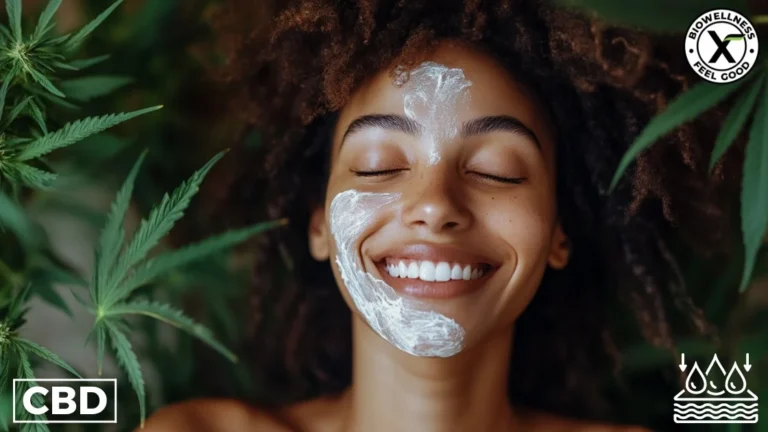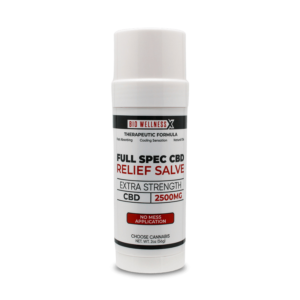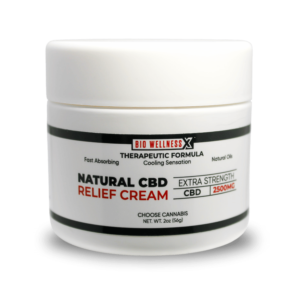key points
If you’re exploring alternatives to CBD tinctures, oils, smoking, or edibles, you might be curious about using CBD directly on your skin. The good news is that CBD offers various health benefits that can be harnessed in different ways, including through topical applications. CBD, being a fat-soluble compound, aligns perfectly with the fat-rich composition of our skin. Since our skin is the largest organ in the body, it’s an ideal surface for CBD absorption. When you apply CBD topicals, like creams or balms, CBD gets absorbed into the skin, interacting with the outer layer known as the Stratum Corneum.
In this article, we will explore how CBD gets absorbed into your skin and examine the various transdermal options currently available on the market.
How do Topical CBD Products work?
We can use CBD in different ways to benefit our bodies. One way involves our skin, as CBD is known for its antioxidant and anti-inflammatory properties. That’s why it’s a popular ingredient in skincare products.
Our skin’s main job is to protect us from infections and other external threats. So, does CBD get absorbed through the skin?
Yes, it does. Keep reading to find out how!
CBD can affect the skin in two ways: through direct application and by passing through the skin. We will explain these methods in more detail later. CBD’s main role is to help our endocannabinoid system (ECS) maintain balance. CBD does this by activating specific cannabinoid receptors called CB2 receptors. These receptors are linked to our peripheral nervous system, which reaches out to various organs, including the skin.
Unlike other CBD methods, CBD is not absorbed deep enough to enter the bloodstream through blood-brain barriers when applied to the skin. However, when applied topically, it has a localized effect by being absorbed through the pores and interacting with the CB2 receptors in the skin.
How can CBD help you after entering the bloodstream?
When CBD is absorbed through the skin, it enters the bloodstream and travels throughout the body to interact with cannabinoid receptors in the endocannabinoid system (ECS). These receptors help control mood, physical discomfort, and inflammation. It’s important to note that not all CBD topical products need to deeply penetrate the skin to provide relief and benefits. Some products, like creams and lotions, are designed to stay on the skin’s surface.
If you have sore muscles after working out or stiff joints, you can use CBD Gel for relief. Also, if you have very dry skin, CBD Lotion can be effective.
How can CBD provide benefits without entering our bloodstream?
When we put CBD on our skin, it works with the cannabinoid receptors to provide its benefits. Factors that can affect whether the cream will penetrate the skin include:
- CBD concentration: Higher CBD concentration helps it penetrate deeper into the skin.
- Skin thickness: Thicker skin makes it harder for CBD to penetrate deeply.
- Carrier Oil: Some carrier oils, like argan oil in our CBD Cooling Gel, have additional benefits, such as easing minor aches and discomfort.
- Skin health: Healthy skin allows for easier penetration of CBD compared to dry or damaged skin.
After learning about these different types of CBD, you might be wondering which one is better: the type that penetrates the skin, or the type that stays on the surface. To answer the first question, it really depends on individual needs.
CBD topicals that enter the bloodstream, known as transdermal CBD, may provide systemic effects such as relief from discomfort, relaxation, and calmness. Since these topicals have to penetrate the skin first and then enter the bloodstream, they may take longer to work compared to CBD topicals that stay on the skin. They may also be more expensive.
CBD topicals can provide relief from achey joints, inflammation, and skin irritations while keeping your skin nourished and hydrated.
How to Choose a Topical for Your Daily Needs
When choosing a CBD topical, it’s important to be picky because there are many options available. Thankfully, there are some simple things to consider to ensure you find the best product for your needs.
CBD topicals come in different strengths, which affect their potency. Higher strengths contain more hemp extract, making them more potent. Consider how strong you want the topical to be to choose the right one for you. It’s important to note that, because of how topicals are absorbed, higher strengths usually don’t cause grogginess.
Before using a topical product, check the ingredients to ensure they are non-irritating and safe for absorption into the body. Most topicals are plant-based, which is gentler on the skin and better for overall body health.
Consider the various types of formulas available, such as lotions, balms, and creams, if you are particular about texture. Different formulas have different textures, so it’s important to choose one that suits your preferences.
Some CBD topicals may contain CBD isolate, which is a type of hemp extract containing only cannabidiol. Others may contain full-spectrum or broad-spectrum hemp extract, both of which offer a rich variety of cannabinoids, terpenes, and other useful compounds from the hemp plant. Full spectrum extract contains a small amount of tetrahydrocannabinol (THC), which is legal and does not cause a high.
Make sure your topical product comes from a well-known brand in the industry that is trusted for making high-quality items.
Organic Topical CBD Products from BioWellnessX
BiowellnessX CBD topicals are specially formulated for the high demands of all people, but they can be extremely useful to anyone looking for localized, targeted relief through this fascinating delivery method.
Natural CBD Relief Cream
Our Natural CBD Relief Cream is expertly formulated with a blend of high-quality natural ingredients designed to provide optimal soothing and cooling effects. The key ingredient, CBD Isolate, ensures targeted relief without any THC.
For deep hydration and nourishment, this cream contains a blend of Coconut Oil, Olive Oil, and Hemp Seed Oil. To provide a soothing sensation, the cream includes cooling ingredients like Menthol Crystals and Peppermint Oil. Additionally, it features healing components such as Arnica, Magnesium, and Turmeric to further soothe and comfort the skin. Natural extracts like Clove Oil, Eucalyptus Oil, and Boswellia Extract add extra therapeutic benefits, making this cream a well-rounded choice for comprehensive relief.
Full Spectrum CBD Relief Salve
If you’re new to using a topical for discomfort and sore muscles we would recommend our BioWellnessX Full Spectrum CBD Relief Salve. Our extra Strength Formula includes a potent 2500MG of full-spectrum CBD hemp extract, along with Coconut Oil, Shea Butter, and Menthol Crystals for relief and soothing properties. It also contains Boswellia Extract Powder, White Willow Bark Extract, Cayenne, and a blend of Essential Oils for additional calming effects and natural relief.
Start by applying it to the affected area once a day. If you don’t experience immediate relief, keep using it daily for at least a week.
Should you find that a week of consistent use isn’t delivering the results you’re looking for, you can gradually increase the application to twice daily or more. Continue to adjust the frequency as needed until you achieve the desired effects.
Whenever you make a change in dosage, stick with the new frequency for at least a week to evaluate its effectiveness. For best results, store the salve in a cool, dark place, away from direct sunlight. In this article, we will learn how CBD gets absorbed into your skin and explore the various options available in the market for topical applications.
Final Thoughts: Can CBD Be Absorbed by the Skin
Looking for relief or skincare? If skincare then try using topical CBD products. They work well for targeting specific skin areas, only affect the skin’s surface, and don’t go deeper than the outer layer, so they won’t enter your bloodstream. They often have extra ingredients to help repair, protect, and moisturize. Many beauty brands are adding CBD to their products because it can help with blemishes and overall skin conditions and health.
If you want CBD to reach your bloodstream through skin absorption and relieve physical discomfort, consider using a transdermal cream or patch. These are designed to deliver CBD through the skin’s deeper layers and into your blood for maximum results.

Legal Disclaimer:
By reading this information presented, you agree to release the author of any liability that comes from using this data. This post does not constitute legal advice. Claims about cannabinoids have not yet been approved by the Food and Drug Administration FDA. Read the full legal disclaimer here.
Other Articles That May Interest You
- Wellness gummies with Myrcene review
- Delta-8 vs CBD, what’s the difference?
- Is Delta-8 legal in Arizona?
- Is Delta-8 or CBD better for pain?
- Delta-8 edibles review
- Is Delta-9 legal?
- Hemp Gummies vs CBD Gummies
References:
- Hemp Production and the 2018 Farm Bill – 07/25/2019 | FDA
- The Controlled Substances Act (dea.gov)
- Hemp Production and the 2018 Farm Bill – 07/25/2019 | FDA
- The Controlled Substances Act (dea.gov)
- The cannabis Terpenes
- Cannabinoids and terpenes
- Therapeutic Efficacy of Cannabidiol (CBD)
- Cannabidiol in Anxiety and Sleep
- Cannabidiol use and effectiveness
- Harvard Health on CBD
FAQs About CBD Absorption
When applied to the skin, CBD mainly affects the outer layer and does not typically penetrate deeply enough to enter the bloodstream. It provides localized relief by interacting with skin receptors but generally remains on the skin’s surface.
When applied topically, CBD interacts with cannabinoid receptors in the skin to treat the area of discomfort or swelling in that area. It doesn’t go into your bloodstream but still helps where you put it. Transdermal products go deeper and reach the bloodstream for broader effects.
There isn’t a universally agreed-upon maximum dosage for CBD, but most people find that doses up to 100 mg are effective and safe. This may vary for topical CBD creams and salves. Always start low, monitor results, and gradually increase if needed, and consult with a healthcare provider for personalized advice.









